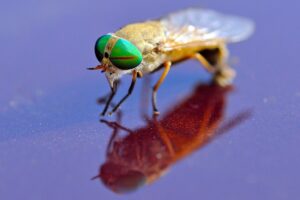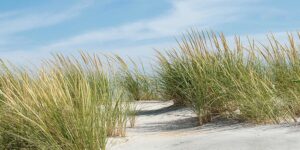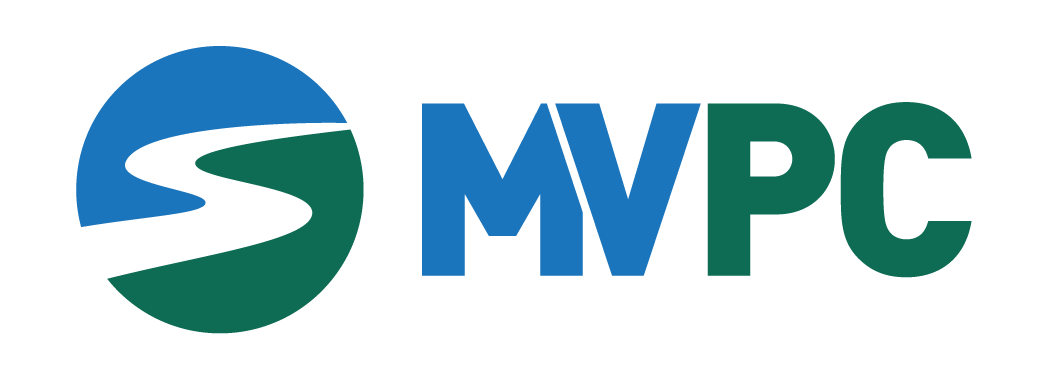So, we’ve all heard of March Madness (a month to revel in the joys and woes of everyone’s favorite college court sport), but…have you heard of MARSH Madness (a month to ‘ohh’ and ‘awe’ over the truly mind-boggling benefits that our coastal wetlands provide)? During the month of March, the MVPC staff partook in a competitive round of trivia organized by the Environmental Program. By answering one question each day, we expanded our collective knowledge of our vital coastal wetland systems! To share in the fun, we have included 4 questions (and answers) from our Marsh Madness competition below for you to play along!
Before we dive in, what are coastal wetlands? Coastal wetlands (or estuaries) are unique habitats that exist where rivers meet the ocean. This convergence of freshwater and saltwater creates a unique and dynamic environment shaped by daily tides, brackish (slightly salty water), and the existence of species who thrive in this niche environment. Coastal habitats provide a range of what we call “ecosystem services” or benefits that help to support our environmental and community health and wellbeing.
QUESTION 1
Question 1 (fill in the blanks): Coastal wetlands make up ____% of the total land area in the continental United States, but account for ____% of economic output.
- 5% of total land area; 23% of economic output
- 13% of total land area; 47% of economic output
- 17% of total land area; 54% of economic output
- 20% of total land area; 61% of economic output
Answer: 2. Coastal wetlands make up 13% of the total land area in the continental US, but account for 47% of the economic output (NOAA, 2022). While comprising only 1/8 of our total land area, they account for nearly half of the economic output and support more than 59 million jobs. In addition, 40% of Americans (130 million people) live near or on an estuary!
It’s clear that our estuaries are critical to our economic prosperity, but they can also bring some nuisances as well….
QUESTION 2
Question 2: Can you correctly name this saltmarsh species (pictured below) which is known for driving marsh-goers CRAZY for just one month each summer?

- Marshfly
- Emerald Nuisance
- Grassy Chuckler
- Greenhead
Answer: The pesky saltmarsh species pictured above is 4. a Greenhead. “Greenhead” is the common name that describes 2 different fly species found on the marsh, Tabanus nigrovittatus and Tabanus conterminous. The entire life cycle of both flies takes place in the marsh. This means they are well situated to capitalize on marsh-goers when they take flight in July. Fun Fact: Only female greenheads are equipped to draw blood. They seek blood as a rich protein source necessary for egg development. So if you are bitten by a greenhead, it is female. Greenheads are known for their painful bites. To try to reduce nuisance greenheads, coastal managers install blue/black boxes across the marsh during the summer months. These boxes attract adult greenheads, luring them in and trapping them within the box.
QUESTION 3
Even though there are some nuisances, our coastal habitats provide a HUGE range of benefits: trapping and storing carbon, improving water quality, protecting our communities against coastal storms, and providing habitat for key species! Despite this, we are losing 80,000 acres of coastal wetland each year in the US (145 football fields a day!). This is due to a whole host of reasons (climate change, development, filling, pollution, altered drainage) nearly all of which can be connected to anthropogenic factors. One of the main factors listed is climate change. Climate change is causing a number of impacts to our environment, one of the most noticeable is sea level rise (SLR). SLR is primarily driven by global warming, causing expansion of seawater and melting of polar ice as oceans absorb heat.
Question 3 (fill in the blank): Sea level in Massachusetts increased by _____ inches between 1900-2000.
- 3 inches
- 5 inches
- 8 inches
- 11 inches
Answer: 4. 11 inches (this is based off of the most recent technical assessment completed by NOAA and collaborators). While sea level has risen globally by ~ 8 inches since 1900, in the Gulf of Maine we are experiencing faster rates of sea level rise than other locations in the world. Sea level rises differently in various places due to factors like gravity, ocean currents, and land movement. Gravity and ocean currents affect how water moves, while changes in land elevation also play a role. And rising waters aren’t slowing down. This same study projected that the Gulf of Maine will experience an increase of another 11 inches by the end of the century.
QUESTION 4
Coastal managers at the local/state/federal level, community groups, and dedicated citizens are working to boost coastal resiliency in the face of climate change! This includes a huge range of initiatives from changing policy to direct restoration activities! In Salisbury, Newburyport and Newbury, coastal managers are helping to protect and restore salt marsh habitat through restoring and maintaining our coastal sand dunes! Sand dunes act as an initial barrier between the ocean and our communities, helping to reduce flooding, wind, and wave action. There are natural ways to enhance our sand dunes through using native plants that can help to stabilize the sand through their roots. One of the most common plants to use for dune restoration is American Beach grass.
Question 4: How quickly does the root system of American Beach grass grow?

- 6 inches per year
- 3 feet per year
- 8 feet per year
- 15 feet per year
Answer: 3. 8-10 feet per year! You can see why American Beach grass is such a superstar in the field of sand dune restoration. Once planted, its extensive below-ground roots help to stabilize sand in place. While its above-ground shoots help to catch and trap wind-blown sand, allowing our coastal dunes to continue growing in height!
Thanks for joining in on the fun to celebrate Marsh Madness! For more information on MVPC’s efforts to protect and restore our coastal resources, visit the Environmental Program Page.
